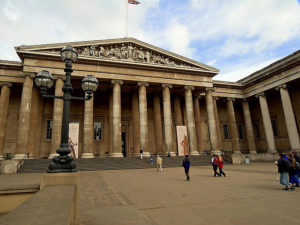In a truly remarkable feat, the British Museum, against all odds, is on its way to recovering nearly half of the artifacts that were likely stolen by former curator Peter John Higgs. This feat, achieved mere months after the theft’s discovery was announced, is a testament to the museum’s resilience and determination. They announced 626 artifacts have been recovered and identified about 100 more found across Europe and North America. Considering the museum’s estimate that Higgs stole or damaged between 1,500 and 2,000 artifacts, it is making amazing progress.
The museum administration credits this to “clever detective work and a network of well-wishers”. However, a good portion of the recovered items came from a single source, the Danish antiques dealer Ittai Gradel. Gradel, the one who initially brought Higgs’s activities to the museum’s attention, personally recovered 350 stolen items after discovering lots available for sale on eBay. Of course, had museum deputy director Jonathan Williams not dismissed Gradel’s initial concerns in 2021, Higgs may not have had the opportunity to steal dozens or possibly hundreds of artifacts. Sadly, we cannot alter the past. Williams has since left the museum in disgrace, and staff are diligently working to identify as many pieces as possible. Even the museum chairman, George Osborne, expressed some amazement: “Few expected to see this day, and even I had my doubts.” Given that Higgs specifically targeted uncatalogued items, tracking them all down has been a Herculean effort for the museum staff. Of course, Osborne has recognized that confirming all the recovered items as artifacts from British Museum storerooms and archives is next to impossible since the museum never catalogued them. Therefore, the museum will be accepting all artifacts as donations.
The Metropolitan Police is still investigating the theft but have made no arrests. The British Museum, however, has sued Higgs in a civil suit, the first time the former curator has been officially named as the person most likely responsible for the theft. The suit alleges that Higgs “abused his position of trust” as a curator to steal and damage thousands of artifacts and antiquities for over a decade. The court has ordered that eBay and PayPal turn over any records associated with the accounts Higgs used to facilitate the items’ sale. On top of the theft, the museum also alleges that Higgs forged documents and manipulated museum records to cover his tracks; claiming he altered 83 documents in total. Arthur Brand, an investigator who made news last year during the recovery of a stolen Van Gogh, made some suggestions as to preventative measures the British Museum should take. Among them is the creation of a secondary database that the museum can use to double-check the catalogue. This database would be inaccessible to museum staff to prevent it from being altered. It would only be consulted when discrepancies are detected.
The current efforts to catalogue the British Museum’s entire collection are expected to cost £10 million and predict that the whole catalogue should be publicly available online within five years.

